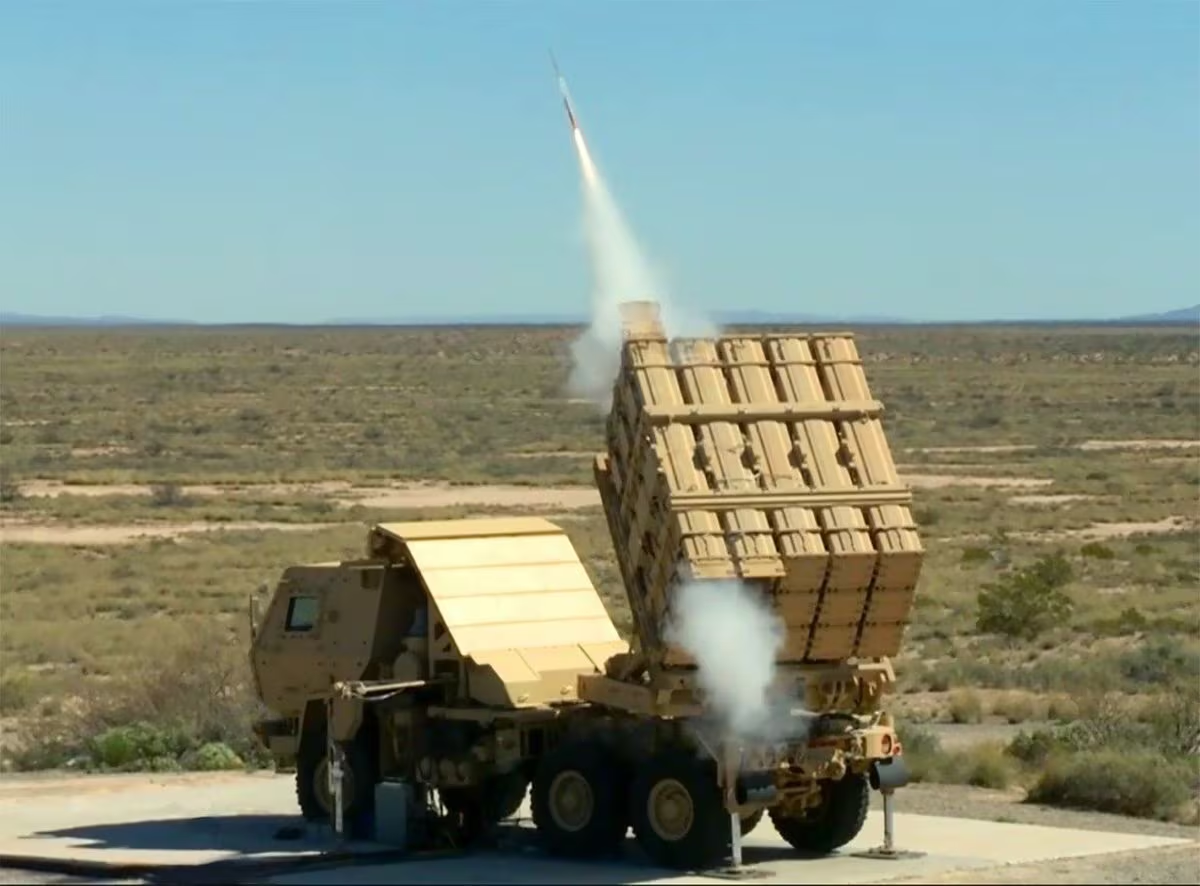WASHINGTON — The Army is nearing the completion of a strategy on the way head for an Indirect Fire Protection Capability that could include a solution to address cruise missile threats in the near term, according to the service’s Air-and-Missile Defense modernization lead.
“I think by the end of the month, we will have a strategy that should be known,” Brig. Gen. Randall McIntire, told Defense News in an interview just before the Association of the United States Army’s annual meeting.
Congress had mandated that the Army turn in a strategy for the IFPC program by Oct. 31 in its fiscal 2019 appropriations bill, which passed last month, giving the service just 30 days to turn in its homework.
IFPC is being designed to defend against rockets, artillery and mortars as well as unmanned aircraft systems and cruise missiles.
The Army has already decided to delay moving forward into the engineering and manufacturing development phase of the IFPC Increment 2 program because of a need to reprioritize and focus on countering cruise missiles and UAS ahead of developing a capability against RAM threats.
The Army’s AMD Cross-Functional Team, led by McIntire, was also tasked by Army leadership to look into the possibility of bringing into the program a non-developmental interim cruise missile defense capability, after the service previously denied the need.
In McIntire’s view, the Army has been tasked by Congress to determine how to solve a gap in cruise missile capability in the short term, while also coming up with a long-term plan.
It’s possible the Army’s strategy will contain two different paths, one that offers the best possible short-term solution that allows the Army to move quickly, and the best solution for the Army’s long-term benefit, according to McIntire.
“We’ve spent the last couple of weeks really honing in on the pros and cons of each one of those things,” McIntire said. “It’s all pre-decisional, quite frankly. It’s pretty close. I don’t know which way it could go.”
For more coverage from the AUSA annual meeting, click here.
For the short-term interim capability, McIntire said, “we are looking at a variety of candidates, to include our current Multi-Mission Launcher,” which is under development by the Army internally, and “we are looking at some foreign systems."
McIntire added that the service is examining those solutions’ different performance measures as well as weighing them against cost and affordability factors.

Among some of the things being hashed out as the Army formulates a strategy for Congress is the possibility of renaming IFPC, which, “is a terrible name,” McIntire said. “We are actually coming up with a better name for it as we come up with a strategy.”
Also part of the Army’s plan in the near term is to qualify a second interceptor for the system. Lockheed Martin, Raytheon and a Raytheon and Rafael team were awarded competitive contracts to mature possible second interceptors.
The Army has already qualified the AIM-9X interceptor and requested $173.2 million in its FY19 budget for the munitions and multi-mission launcher components.
RELATED

According to an industry source, it’s possible the Army has decided to eliminate the AIM-9X as the baseline interceptor, which leaves the service with near-term choices that could include what is being developed for the second interceptor — Lockheed’s Miniature Hit-to-Kill missile, Raytheon’s SkyHunter, otherwise known as the Tamir interceptor in Israel, or even the already fielded Advanced Medium Range Air-to-Air Missile.
Israeli company Rafael and its U.S. partner Raytheon have been vocal about using Rafael’s full-up Iron Dome system as an interim cruise missile defense capability.
“While we have had multiple conversations with the Army about Iron Dome and its capabilities, we have not been informed of a specific Army plan to acquire an interim IFPC solution,” Ed Roesly, Raytheon’s senior director of Israeli cooperative programs, told Defense News recently.

But he added that Army Space and Missile Defense Command “is conducting research about the impact of integrating a current Iron Dome battery into the Army’s air defense systems. We are confident that the integration is low risk.”
Roesly noted that Iron Dome is a combat proven solution — used frequently in Israel — and is not a developmental solution.
Rafael and Raytheon have already demonstrated Iron Dome in the U.S. at two formal tests at White Sands Missile Range in September 2017 and October 2016.
The system — which includes a battery with a command and control radar, and the first of six launchers — is in the U.S. at a secure facility, Roesly said, and would be available to provide additional tests or demonstrations.
“We continue to offer to deliver that battery with missiles in less than 10 months,” Roesly said.
Jen Judson is an award-winning journalist covering land warfare for Defense News. She has also worked for Politico and Inside Defense. She holds a Master of Science degree in journalism from Boston University and a Bachelor of Arts degree from Kenyon College.








